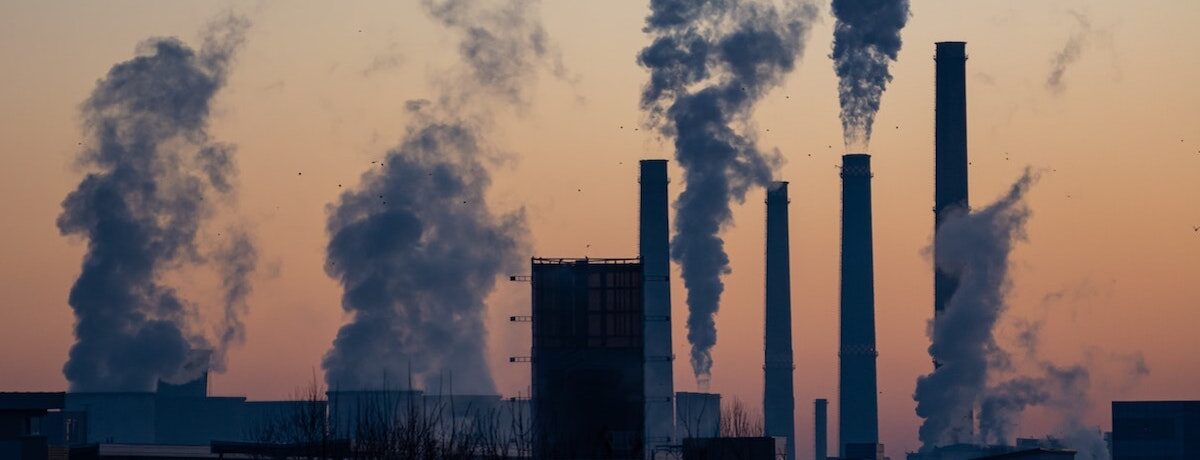
Why Methane Removal Might Be Our Best Bet to Stop Rising Global Temperatures
Rob Jackson Suggests Ways Businesses, Scientists and Governments Can Work Together to Clean the Atmosphere
Cumulative emissions matter the most for longer-lived gases such as carbon dioxide and nitrous oxide. Cumulative emissions of carbon dioxide since 1850 are about two and a half trillion tons—from all the coal mines ever dug, all the oil and gas ever burned, and all the net losses of carbon in trees and soils from deforestation, agriculture, and other changes on land. A trillion tons is an unfathomable number—about three million Empire State buildings worth of mass.
Restoring the atmosphere in a lifetime—returning concentrations to preindustrial levels—is impossible for carbon dioxide. It would mean removing a trillion tons of pollution now in the air. No one reading this book will live long enough to see that happen; the quantities are too vast, today’s emission rates are too high, and carbon dioxide lasts too long in the atmosphere. The same is true for nitrous oxide.
But for methane we need to remove “only” two or three billion tons to restore the atmosphere to preindustrial levels. (In comparison, three billion tons is roughly one month’s worth of current carbon dioxide emissions.) My dream is to see this happen in my lifetime.
If we want to slow global warming by reducing greenhouse gas concentrations over the next decade or two, reducing atmospheric methane concentrations is the best—and perhaps only—lever at our disposal to shave peak temperatures and delay crossing critical temperature thresholds, such as 1.5 and 2°C global increases.
Most methane is cleansed from the atmosphere naturally within a decade of its release, split by sunlight and nature’s detergents. Because of this short lifetime, if we could eliminate all human-caused methane emissions from agriculture, fossil fuels, and fire—a huge if—methane’s concentration would return to safer preindustrial levels within a decade or two. If that doesn’t happen, we will need to actively remove it from the atmosphere to reduce peak temperatures.
If we want to slow global warming by reducing greenhouse gas concentrations over the next decade or two, reducing atmospheric methane concentrations is the best.
In the 2010s, methane was responsible for about 0.5°C of global surface warming compared to the late 1800s. Carbon dioxide contributed a little more, about 0.75°C warming over the same period. Other gases warmed the Earth, too, particularly nitrous oxide (almost 0.1°C), with another 0.1°C warming coming from refrigerants such as the chlorofluorocarbons (CFCs), which cause the ozone hole, and their replacements, hydrofluorocarbons (HFCs).
Carbon dioxide is two hundred times more abundant in the atmosphere (425 ppm) than methane (~ 2 ppm). However, pound for pound, methane is eighty or ninety times more potent two decades after its release and roughly thirty times more potent than CO2 after a century. Concentrations of methane have also increased far more in the Earth’s atmosphere since preindustrial times (160 percent) than those of carbon dioxide (“only” 50 percent).
Although carbon dioxide remains the most important greenhouse gas, methane is the second most important and the priority of my current climate work. No other greenhouse gas provides the opportunity for such rapid atmospheric restoration. Restoring the atmosphere will require drastic cuts in greenhouse gas emissions and—most likely—the removal of greenhouse gases already in the air.
*
The need for “drawdown,” defined here as removing carbon dioxide, methane, and other greenhouse gases from the atmosphere after their release, arises from failure. We have flooded the atmosphere with trillions of tons of carbon dioxide pollution—most of it in the last fifty years—even after the danger to life was clear. In fact, annual global fossil carbon dioxide emissions rose 60 percent since publication of the first IPCC report in 1990 that documented the climate problem comprehensively. We have not just failed but failed spectacularly.
Given our failure to act, we’ve left future generations little choice but to clean up after us if global temperature increases are to stay below 1.5°C or 2°C thresholds. And paying to remove greenhouse gases from the air tomorrow will cost much more than preventing them from entering the air today.
Can drawdown technologies actually work? They can. Can they work at the billion-ton scales needed? Perhaps, but only if someone pays enough for them. They aren’t magic—as we’ll see—and they’re expensive. Under almost every scenario, meeting the 1.5°C temperature target will require removing some previously emitted carbon dioxide (CO2) from the atmosphere. One of our recent Global Carbon Project analyses led by Sabine Fuss in Germany concluded that if we could keep cumulative global emissions below 750 billion metric tons (about two decades of current emission rates) before 2100, about 400 billion tons of carbon dioxide would still need to be removed from the atmosphere to keep global temperatures increases below 1.5°C in 2100.
Even if we estimate the cost of removing carbon dioxide in the future as $100 per ton, an aspirational target at best and five times lower than a typical industrial cost today, removing 400 billion tons will cost $40 trillion—larger than the combined annual GDPs of China and the United States. Younger generations are legitimately asking: “Why should we pay for this?”
Even if we find a way to pay this $40 trillion bill, carbon removal is tricky to achieve at scale. The atmosphere contains about 1 molecule of carbon dioxide for every 2,500 molecules of other gases (0.04% CO2), which makes finding and “removing” carbon dioxide like pulling needles repeatedly from a haystack. In contrast, about one in ten molecules emitted from the smokestack of a fossil power plant is carbon dioxide (10 percent CO2). Thus it makes no sense to pay to remove dilute CO2 from the atmosphere while allowing smokestacks to keep belching concentrated carbon dioxide into the air today. Wherever we keep burning fossil fuels, we need to capture the carbon pollution from smokestacks now, before it enters the air. And unless fossil power plants are serving a region of the world mired in energy poverty, no new fossil plants should be built without carbon capture and storage technology.
In 2023 there were only about forty carbon capture and storage (CCS) plants running worldwide, with another 325 in development. The amounts of carbon stored annually rose to twenty-nine million tons of carbon dioxide, less than one-thousandth of all fossil carbon dioxide emissions. Compared to the forty active CCS facilities, thousands of fossil plants operate globally. If all of those fossil plants complete the end of their lifetimes without carbon capture and storage, their “committed emissions” will entail hundreds of billions of additional tons of carbon dioxide pollution, more than enough to push us past 1.5ºC and possibly 2ºC.
If we fail to curb emissions and fail to capture and store the carbon pollution from large sources, then carbon drawdown or removal technologies come into play. Using land is one of the cheapest options—especially regrowing the carbon in forests and soils lost to the atmosphere through deforestation and agricultural activities.
The world lost a billion hectares of forest in the twentieth century; most of that land is now used for growing crops and cattle ranching. Agricultural activities such as plowing have released billions of tons of carbon dioxide into the atmosphere from the world’s soils. These carbon losses from soils and forests underpin natural climate solutions, approaches that stem carbon losses and put carbon back through conservation, restoration, and improved land management. Fairly optimistic estimates suggest such practices could provide one-third of the climate mitigation needed by 2030 to stabilize global warming below 2°C. Natural climate solutions are also currently the cheapest way to offset fossil fuel pollution, often at costs of approximately $10 per ton of CO2 stored—acknowledging that carbon stored in a tree is not permanent like carbon locked away underground.
We can remove billions of tons of carbon from the atmosphere through natural climate solutions such as forest and wetland restoration, tree planting, no-till farming, and other actions. A more plant-based diet, especially eating less red meat, would also reduce deforestation, the global tally of a billion-plus cows, and methane emissions, while sparing land for other ecosystems and human uses.
Can we rely mostly on natural climate solutions? No, at least not to offset anywhere near the almost forty billion metric tons of annual fossil carbon pollution, and not if we don’t want it to compete with agriculture for land.
Without immediate, drastic emissions cuts, industrial greenhouse gas removal will be needed to keep global temperature increases below both 1.5°C and 2°C. Scientists have studied atmospheric carbon dioxide removal for more than a decade: the twin steps of capturing carbon dioxide from the air and storing it out of harm’s way. Plants, including trees, grasses, kelp, and phytoplankton, as well as some microbes, take up carbon dioxide through photosynthesis. Rocks and industrial chemicals can also be used to remove CO2 from air.
Beyond the natural climate solutions discussed above, there is a hybrid industrial approach known as BECCS, which stands for bioenergy with carbon capture and storage. For BECCS, users gather or harvest trees or other plants that extract CO2 from the atmosphere, burn the biomass to produce electricity (or convert it into biofuels), and pump the carbon dioxide pollution underground to keep it from returning to the air. Of all the drawdown or negative emissions technologies, BECCS is the only one that provides energy rather than requires it (and, done carefully, can provide close to carbon-free or even carbon-negative energy). A recent U.S. National Academy of Sciences study put the U.S. potential for BECCS at three to five billion metric tons of carbon dioxide removed per year without large adverse impacts. That amount is roughly one-third to one-half of the carbon removal many scientists believe will be needed each year globally to maintain a livable climate. We will explore BECCS in the next chapter.
Another drawdown technology is enhanced weathering. This approach tries to accelerate the rate at which rocks react naturally with atmospheric CO2. Igneous basalt—dark-grained and volcanic—covers a tenth of the Earth’s continental surfaces and most of the ocean floor. Basalt contains lots of minerals that react with carbon dioxide to form carbon-rich rocks. Calcium carbonate, or common “limestone,” for instance, combines one calcium atom with carbon dioxide and an extra oxygen (CaCO3). It is the stone that was used to build the Empire State Building and the Great Pyramid of Giza.
Imagine mining basalts, crushing them, and exposing them to the air to react with carbon dioxide. You might even fertilize an agricultural field with them, enhancing plant growth because of the extra calcium, magnesium, and additional nutrients the rocks release. Alternatively, you might just expose crushed rock to air and rebury it after it reacts fully with atmospheric CO2. Cost estimates for enhanced weathering are $75–250 per ton of CO2 removed. Start-up companies are forming to try, but enhanced weathering hasn’t scaled to commercial-level projects yet. We know weathering works in nature over thousands of years; can companies speed up the process enough for it to work in only years?
Finally, dozens of companies are working on direct-air capture (DAC) of carbon dioxide using specialized chemicals, as we will see in a journey to Iceland in Chapter 10 to examine a process that combines aspects of enhanced weathering and DAC. Nitrogen-based “amines” have been used for decades in refineries and chemical plants to scrub carbon dioxide from gas streams. Hydroxides are a second family of chemicals used in commercial direct-air capture operations. In both cases, the original chemicals can be regenerated using heat or by changing the acidity of a solution. Concentrated carbon dioxide is released during this chemical regeneration.
Methane removal could help shave tenths of degrees off peak temperatures and buy us more time to cut carbon dioxide emissions further.
In most direct-air capture operations, the captured carbon dioxide must be pressurized and pumped underground, just as for BECCS during the carbon capture and storage (CCS) part of the process. The current cost range for direct-air capture is about $250–600 per ton of CO2 removed, far more than for natural climate solutions. Today, companies are removing a few tens of million tons of carbon dioxide a year from the atmosphere industrially. That’s a start but far from the billions of tons needed yearly.
Beyond carbon dioxide, we’ll need to remove other greenhouse gases from the air, too. Two-thirds of global methane emissions come from human actions, including fossil fuel use and agriculture. Global methane concentrations are now 2.6 times higher than they were two centuries ago.
Removing methane from the atmosphere is more difficult than removing carbon dioxide. It’s less abundant in air than carbon dioxide and therefore more difficult to isolate. But methane removal also has advantages. Notably, you don’t need to capture it and pump it underground. If you can react it using catalysts or nature’s detergents, you can convert it to CO2 and release it, eliminating the capture and storage phases that make carbon capture so expensive. Because all methane emitted into the atmosphere eventually becomes CO2, methane removal simply speeds nature’s reaction. Trading methane for carbon dioxide is good for the climate because methane is so much more potent than CO2.
If feasible at scale, methane removal could help shave tenths of degrees off peak temperatures and buy us more time to cut carbon dioxide emissions further before a given temperature threshold is passed. Further, some scientists believe that it is possible—even likely—that catastrophic levels of methane could be released from Arctic permafrost and tropical wetlands this century because of warming temperatures. Preparing for methane removal today could provide much needed insurance against future disaster.
For all drawdown solutions, we will need either a regulatory mandate or a global price or market for carbon and methane pollution to prompt action. An “upstream” carbon price adds a fee wherever fossil fuels are extracted, with the extra cost passed on to consumers in the price they pay for products derived from fossil energy. (Discussions are needed on what to do with the proceeds from fees and how to keep poorer people from paying higher prices for their energy.) This price would better shift the financial burden of emissions onto the people, companies, and industries responsible for them and would more closely reflect the real cost of fossil pollution. None of the options I’ve discussed above is feasible at large scale without a carbon market or, short of that, policy mandates requiring action.
Unfortunately, a national carbon price is unlikely anytime soon in the United States. The last market-based climate bill with any chance of passage was more than a decade ago: the Waxman-Markey American Clean Energy and Security Act of 2009, which passed the U.S. House with bipartisan support but never reached a vote in the Senate. Getting a market-based climate bill through either the U.S. House or Senate these days seems a tall order, despite the success of such bills to reduce acid rain cheaply and efficiently in the past.
Although the cost of drawdown is high, the cost of doing nothing is staggering. Insurance companies understand costs and risks better than anyone. Insurance giant Swiss Re, the world’s second-largest reinsurance company (reinsurance companies insure insurance companies), recently estimated that the global economy could shrink by 18 percent if no climate mitigation action is taken, at a cost of up to $23 trillion annually by 2050. Their report concluded: “Our analysis shows the benefit of investing in a net-zero economy. For example, adding just 10% to the U.S. $6.3 trillion of annual global infrastructure investments would limit the average temperature increase to below 2°C. This is just a fraction of the loss in global GDP that we face if we don’t take appropriate action.” The insurance industry believes that the costs of climate inaction dwarf the costs of climate action.
To reduce these costs, we need to cut emissions—and then cut them some more. (That’s the reason I began this book with “Emissions First.”) We’ll also need to deploy energy technologies that not everyone reading this book will like. If we shun nuclear power, we might need to harvest trees and biomass for energy from additional land the size of Texas, changing land-use habitats and conservation priorities. If we scuttle those options, we might need thousands of natural gas plants pumping pollution underground, monitoring groundwater beneath them to make sure the pollution stays put. And if we don’t do that, we might pay far more and cover a tenth of usable land area with solar panels to keep the lights and heat on during winter, as our recent analysis showed for the state of California. We need a new energy system that is reliable and capable of reducing emissions, and, as in the classroom and workplace, diversity helps.
We will need diverse drawdown technologies, too. We’ll need to implement natural climate solutions, restoring forests and soils wherever possible. We need to lower the cost of drawdown technologies and hope people accept such technologies at thousands of locations. We need to discuss personal issues of population, diet, energy use, and inequality.
In truth, I’m frustrated writing about “drawdown” technologies because we shouldn’t need them. I’ve watched years of climate inaction roll by like floats in a parade. When will the victory parade finally begin?
__________________________________

From Into the Clear Blue Sky: The Path to Restoring Our Atmosphere by Rob Jackson. Copyright © 2024. Available from Scribner, an imprint of Simon & Schuster.
Rob Jackson
Rob Jackson is the Chair of the Global Carbon Project, a Senior Fellow at Stanford’s Woods Institute for the Environment and Precourt Institute for Energy, and a professor of earth science at Stanford University. Through global scientific leadership and groundbreaking research, communications, and policy activities, Jackson’s work has reduced millions of tons of greenhouse gas emissions and improved human health, safety, and air and water quality. One of the top five most-cited climate and environmental scientists in the world, he has authored more than 400 peer-reviewed publications, and his writings have appeared in many outlets, including The New York Times, Scientific American, and The Washington Post. Jackson lives in Stanford, California.












